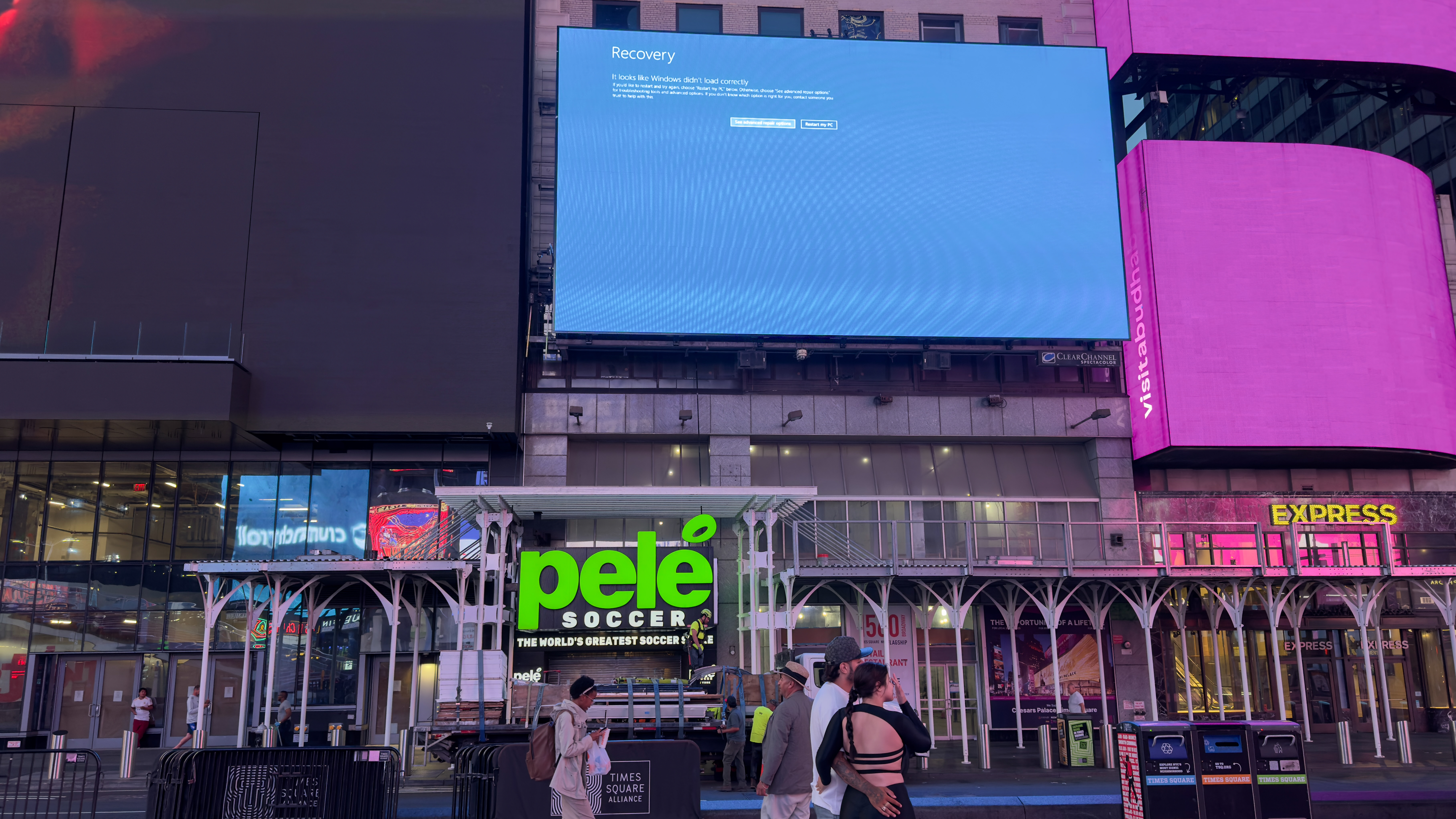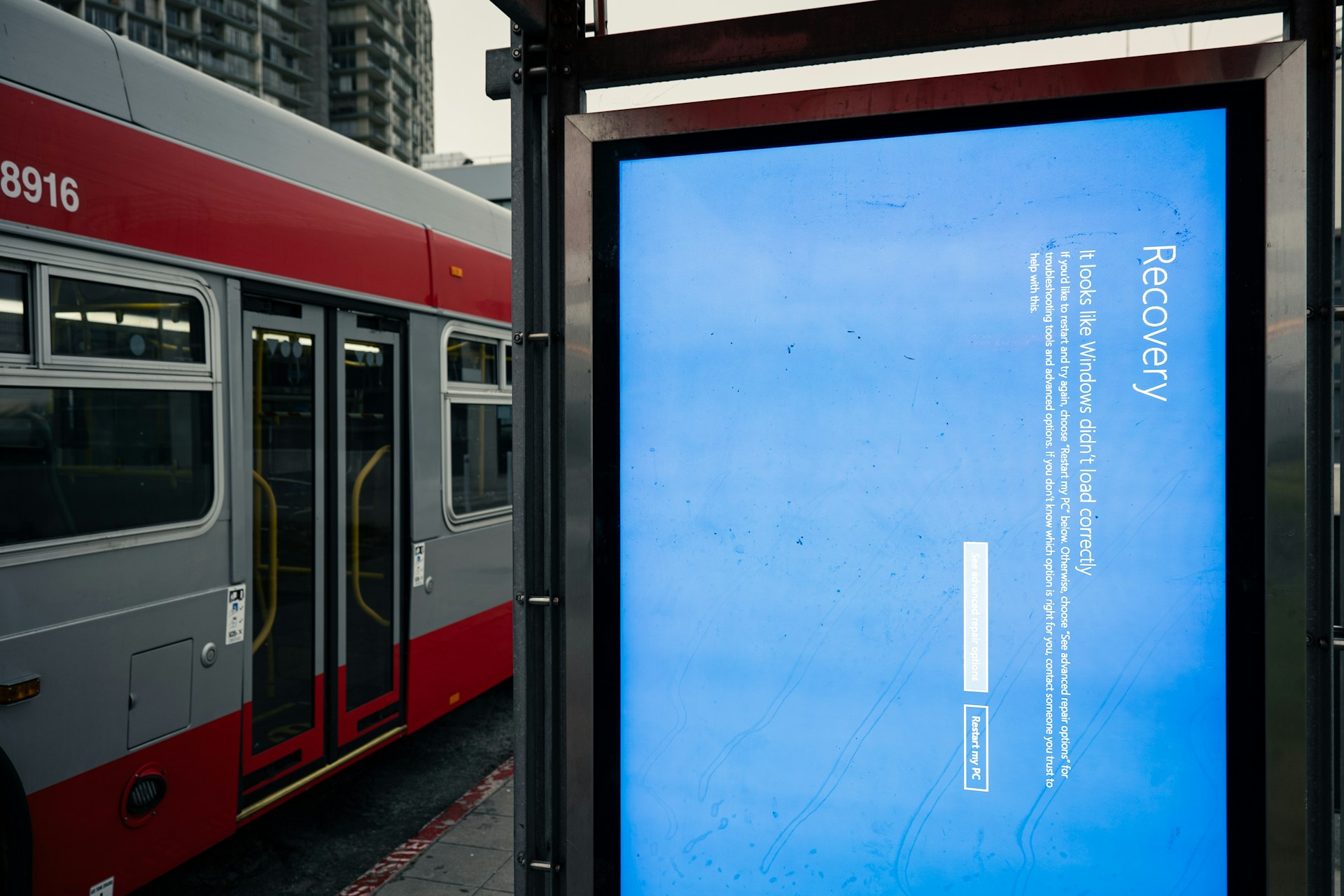You're about to see even fewer BSODs in public with Windows 11's new 'Digital Signage Mode' — every public blue screen will wither away within 15 seconds of the crash

Blue screens of death in public are an increasingly rare yet ever-so-hilarious phenomenon. Back in the day, a blue screen remaining up for hours on end, like the infamous giant LED wall at the Beijing Olympics rehearsal, often reminded us that we're not so different after all. Now, Microsoft is tightening its rope on even these unorthodox BSOD appearances with a new "Digital Signage Mode" announced at the Ignite 2025 event.
As the name suggests, this is a special mode that can be configured inside Windows 11, part of the recovery settings found in the OS. Once enabled, any blue screen of death will only remain visible for 15 seconds, then automatically disappear without needing manual intervention. Keep in mind that a BSOD almost always leads to an immediate restart anyway, so these are edge-case scenarios we're talking about.
If the computers running the signage aren't properly set up to deal with a sudden crash, or if an IT team isn't actively present at the site monitoring them, that's when this mode can come in clutch. "Once enabled, it helps ensure no Windows screens or error dialogs will show on your public displays," said Microsoft in the announcement blog, which also details AI agents that we recently covered in our Agent Workspace story.

Digital signage mode is not related to the already existing Kiosk mode, which locks down Windows to just one platform or application, often booting directly into it without loading other UI. Kiosks run enterprise-grade Windows, which is more stable to begin with, but a lot of the time, billboards and posters are managed more leniently, where such a fallback could be of genuine help in an emergency.
Once again, we're only referring to non-interactive screens showing adverts here, so that lousy government software-running terminal in your local office won't be affected. Microsoft says in its blog post that Kiosk mode is still the ideal choice for interactive displays, such as those issuing tickets at a bank, or perhaps an ordering counter at a restaurant.
Aside from this new recovery feature set to rob us of iconic public BSODs, Microsoft also introduced other stability-based improvements in Windows, such as a more comprehensive restore point system, called "Point-in-time Restore." IT managers will now be able to use the Intune portal to service PCs even more thoroughly, with remote access to the OOBE setup. Copilot made an expected appearance at the event as well, with lots of focus on AI features we all definitely asked for.

Follow Tom's Hardware on Google News, or add us as a preferred source, to get our latest news, analysis, & reviews in your feeds.
Get Tom's Hardware's best news and in-depth reviews, straight to your inbox.

Hassam Nasir is a die-hard hardware enthusiast with years of experience as a tech editor and writer, focusing on detailed CPU comparisons and general hardware news. When he’s not working, you’ll find him bending tubes for his ever-evolving custom water-loop gaming rig or benchmarking the latest CPUs and GPUs just for fun.
-
DS426 15 seconds can still provide a lot of embarrassment at large venue / high-populated area; if MS is going to bother with this feature, make it either 5 seconds or better yet, make the time configurable.Reply -
-Fran- I have a couple as well. The funniest one I took was from some screens at St. Pancras Train Station in London.Reply
I always laught when I see a BSOD on a public place, which you'd think shouldn't be "common", but it's more common than it should be, for sure.
Regards.